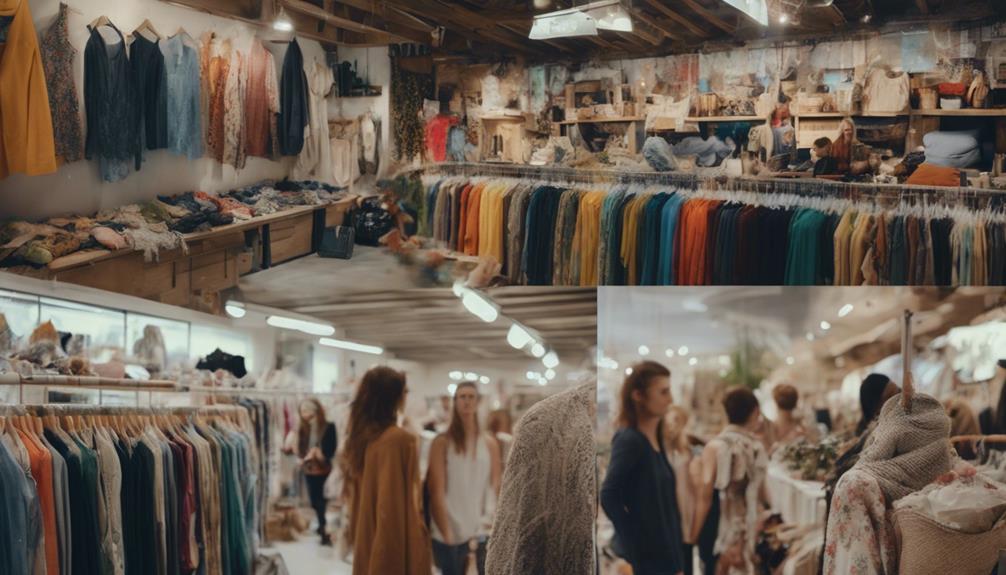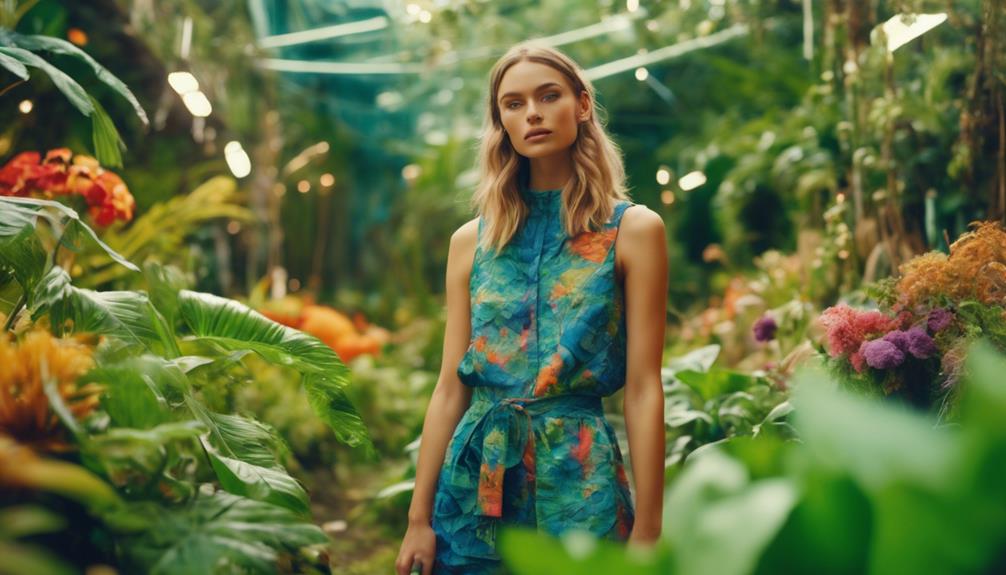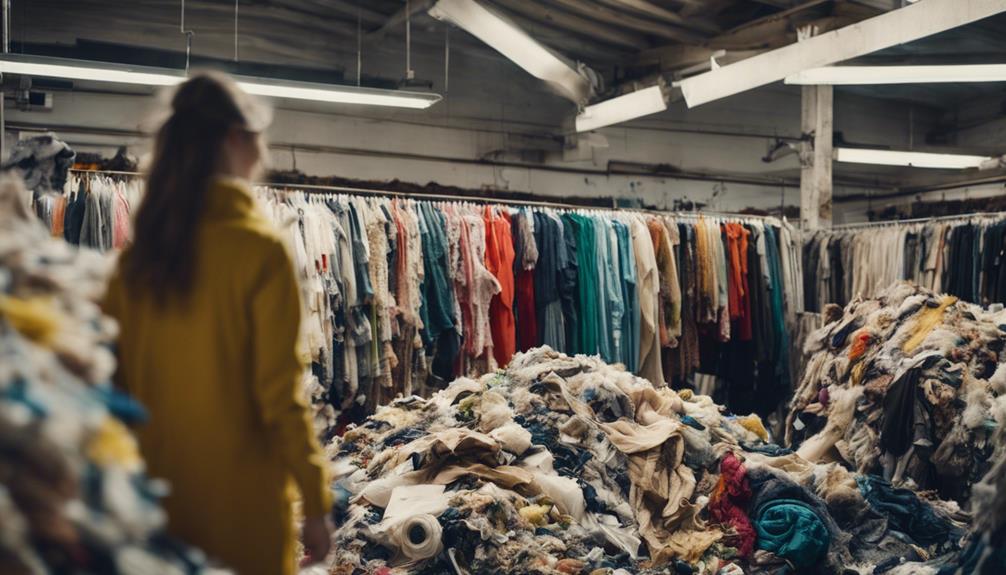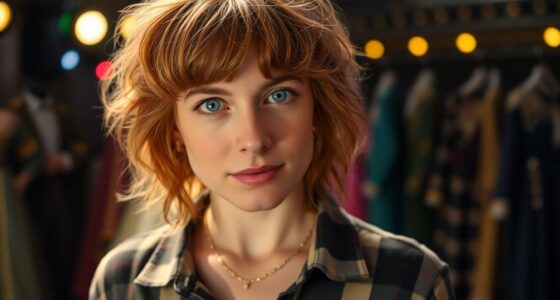Sustainable fashion comes with its fair share of downsides that may catch you off guard. You’ll often come across misleading claims and widespread greenwashing, making it challenging to trust brands. Additionally, the high price tags can exclude lower-income shoppers, while recycling programs often fall short, leading to most garments ending up in landfills. Lack of transparency and intricate supply chains further complicate matters, making it difficult to pinpoint truly sustainable options. Ultimately, the industry’s lack of regulation means many practices go unchecked. There is still much more to learn about these issues, so continue exploring to get a better understanding of sustainable fashion.
Key Takeaways
- Sustainable fashion often comes with higher price points, making it less accessible for lower-income consumers compared to fast fashion alternatives.
- Misleading green claims and greenwashing create confusion, making it difficult for consumers to identify truly ethical brands.
- Recycling programs in the fashion industry show low participation rates, with many old garments ending up in landfills instead of being reused.
- Limited transparency in supply chains raises consumer trust issues, as many brands do not disclose sourcing or labor conditions effectively.
Industry Misleading Claims
Many fashion brands mislead consumers with exaggerated claims about sustainability, creating confusion and distrust in their marketing messages. You might think you're supporting sustainable brands, but many are just engaging in greenwashing. The fast fashion industry cleverly markets sustainability as a buzzword to distract you from their harmful production practices.
For instance, major brands like H&M have faced backlash over their Conscious collection, which lacks transparency about the actual benefits of the materials used. When these companies make vague sustainability claims, they often evade accountability for their environmental impacts. This leaves you questioning what truly defines a sustainable brand.
It's frustrating to see brands promote eco-friendly images while continuing resource-intensive practices. You deserve clarity in your choices, but the prevalence of exaggerated green claims makes it challenging to know which brands genuinely prioritize sustainability.
Ultimately, this manipulation creates misconceptions about what real sustainable fashion looks like. As a conscious consumer, it's vital to scrutinize these claims and demand transparency from the brands you support to guarantee your values align with their practices.
The Greenwashing Dilemma
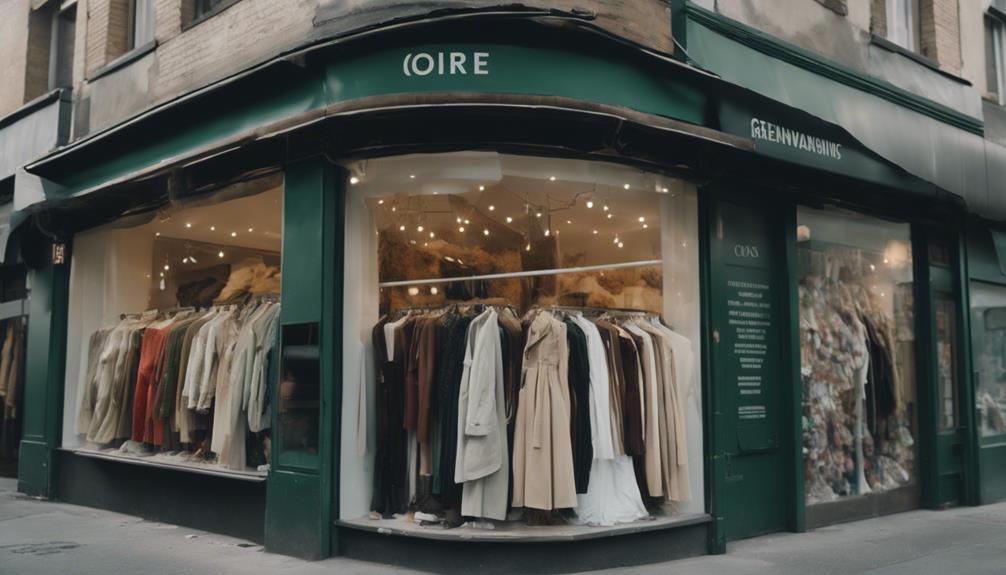
The greenwashing dilemma plagues the fashion industry, making it difficult for you to identify brands that genuinely prioritize sustainability. With 42% of companies' green claims deemed exaggerated, false, or deceptive by the European Commission, it's tough to trust what you see. Major players like H&M have faced backlash for their Conscious collection, which often lacks transparency and doesn't deliver real sustainable material benefits.
Many companies use vague sustainability goals to escape accountability, allowing them to continue harmful production methods while presenting a progressive image. Misleading marketing tactics, like Uniqlo's cartoon character ambassador for sustainability, only add to the confusion. These strategies raise questions about whether brands are truly committed to sustainability or just riding the green wave for profit.
To combat greenwashing, there's a strong call for top-down approaches and specific, researched goals. You need brands to be held responsible for their environmental impact, ensuring that their claims are backed by genuine efforts. Until that happens, you'll have to navigate a minefield of misleading marketing and exaggerated promises in the sustainable fashion industry.
High Costs of Sustainability

While traversing the complexities of greenwashing, you might also encounter the high costs associated with sustainable fashion, which can make it challenging for budget-conscious shoppers to embrace eco-friendly choices. Sustainable fashion brands often charge considerably more for their garments—sometimes up to 50% higher than fast fashion alternatives.
This price difference stems from the use of eco-friendly materials and ensuring fair wages for workers, which are essential to ethical production practices. On average, you'll find that sustainable pieces range from $100 to $300, reflecting those higher production costs. For many consumers, the upfront investment can be a deterrent, especially when the immediate benefits of durable clothing aren't clear.
You may not even see the long-term savings that come from buying fewer, higher-quality items when you're faced with such high costs of sustainability. Additionally, the relatively small sustainable fashion market means limited availability, which further keeps prices elevated.
This situation creates a cycle where consumers feel compelled to choose cheaper fast fashion over sustainable options, ultimately affecting overall clothing consumption patterns. It's a tough decision for those wanting to make a positive impact without breaking the bank.
Limited Accessibility for All
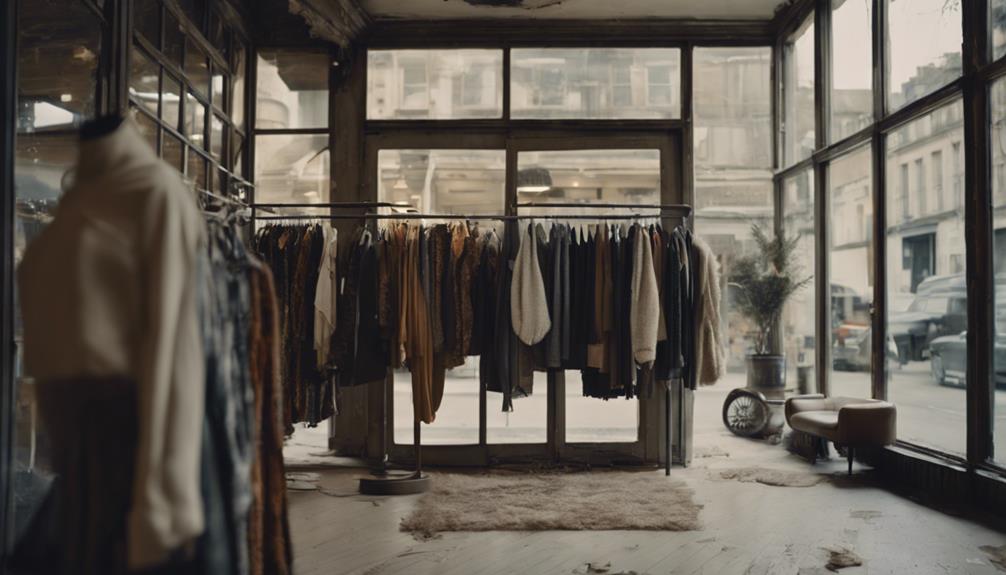
When you look for sustainable fashion, you might notice that many options come with a hefty price tag, making it tough for everyone to participate.
Plus, the limited availability of brands can leave you feeling frustrated, especially if you're trying to shop ethically.
This lack of accessibility raises important questions about who can truly engage with sustainable fashion.
High Price Point
Sustainable fashion often comes with a price tag that's 30-50% higher than fast fashion, making it tough for many consumers to justify the expense. This high price point can create significant affordability challenges, especially for lower-income shoppers who desire sustainable clothing but find it financially out of reach.
While many consumers express a strong desire to support ethical brands, the higher initial costs often force them to choose between sustainability and their budget. With 60% of shoppers indicating they'd purchase more sustainable products if they were more affordable, it's clear that price is a major barrier. When faced with limited options that fit their financial means, many people revert to cheaper, unsustainable brands.
This cycle not only undermines their values but also perpetuates the very issues sustainable fashion aims to address. As a result, the perception that ethical options are financially inaccessible keeps consumers from fully embracing sustainable fashion. Until brands can find ways to lower their costs while maintaining eco-friendly practices, the high price point will continue to limit accessibility for all.
Limited Brand Availability
Limited brand availability in sustainable fashion makes it tough for many shoppers to find options that fit their style and budget. You might find that most sustainable clothing brands operate online, leaving you without the tactile shopping experience of brick-and-mortar stores. This can be frustrating, especially if you prefer to try before you buy. Additionally, many sustainable options target specific demographics, which often leads to a lack of affordable choices for low-income consumers.
Here's a quick comparison of sustainable fashion options:
| Brand Type | Price Range | Accessibility |
|---|---|---|
| High-End Brands | $200 – $500 | Limited availability |
| Mid-Range Brands | $100 – $200 | Online only |
| Budget-Friendly Brands | Under $100 | Rarely found locally |
| Niche Market Brands | $150 – $300 | Specific demographics |
| Fast Fashion Brands | Under $50 | Widely available |
With the sustainable fashion market still small, you may struggle to find diverse options that cater to your needs. This limited brand availability can make adopting sustainable clothing harder than it should be.
Ineffective Recycling Programs

You might think recycling programs in fashion are the answer to sustainability, but the reality is often disappointing.
Limited participation rates and poor material recovery mean that most of what you recycle still ends up in landfills.
It's time to question how effective these programs really are and whether they're just a marketing ploy.
Limited Participation Rates
Many consumers aren't aware of effective recycling options, which leads to low participation in fashion recycling programs. This limited participation rates in sustainable fashion practices contribute greatly to textile waste. Despite the growth of recycling initiatives, only about 15% of old clothing is recycled or donated, with the majority ending up in landfills.
| Recycling Options | Impact |
|---|---|
| Awareness Campaigns | Increase participation rates |
| Convenient Drop-off Locations | Enhance recycling accessibility |
| Incentives for Recycling | Encourage consumer engagement |
| Collaboration with Local Charities | Promote clothing donation efforts |
| Clear Guidelines on Recycling | Educate consumers on proper methods |
Fast fashion retailers often fail in their recycling efforts, leading to only 20% of recycled materials being reused in new garments. With the average American disposing of over 75 pounds of textiles annually, it's essential to improve awareness around recycling options. By empowering consumers with knowledge and accessible programs, we can combat limited participation rates and foster a more sustainable fashion industry.
Poor Material Recovery
While awareness campaigns can boost recycling participation, the reality is that most recycling programs for clothing are ineffective, with only about 15% of old garments being recycled or donated. This poor material recovery leads to a staggering 80% of donations ending up in landfills.
You might be surprised to learn that the average American discards over 75 lbs of textiles annually, contributing to the 11 million tons of textile waste that ends up in landfills each year. Recycling options are often limited, especially for synthetic fibers, which can take hundreds of years to decompose.
Fast fashion brands may promote recycling initiatives, but the actual recovery rates for materials remain dismally low. This failure to address the root causes of textile waste misleads consumers, making them believe their discarded clothing is being effectively repurposed.
In reality, most of it isn't being recovered or reused in a meaningful way. As a consumer, it's crucial to recognize the shortcomings of current recycling programs and consider more sustainable practices in your fashion choices.
Supply Chain Complexity
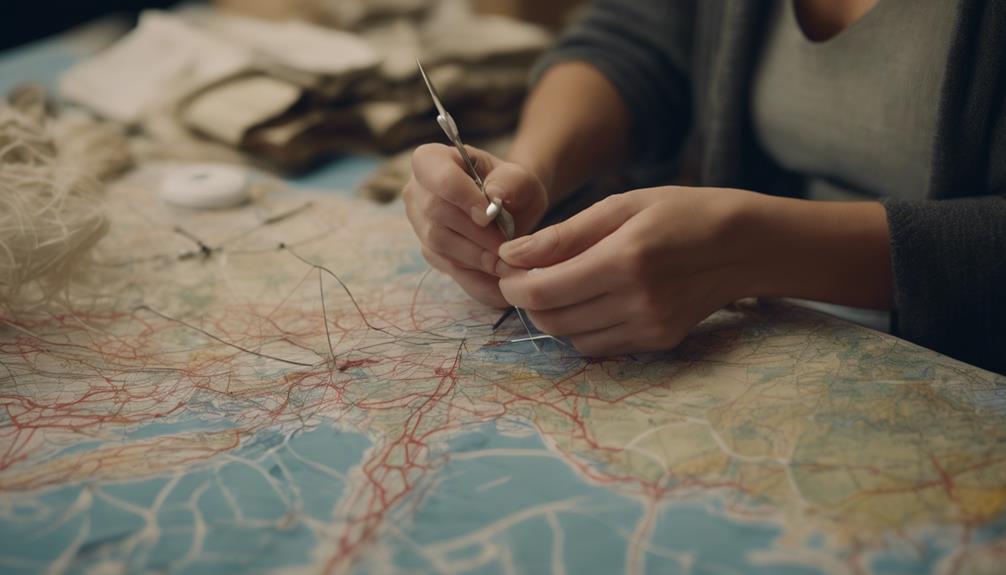
Sustainable fashion's supply chain often presents complexities that make tracing material origins and ensuring ethical practices a challenging task. You might think that buying sustainable means you're making a clear choice, but reality can be murky.
Here are some factors contributing to this complexity:
- Material Sourcing: Sustainable materials like organic cotton or recycled fabrics can be hard to find, leading to increased production costs.
- Global Networks: Many brands rely on intricate global supply chains, which can still result in significant carbon emissions during transportation.
- Lack of Transparency: Achieving transparency in the supply chain is tough. Many brands don't disclose enough information about sourcing and labor conditions, leaving you in the dark.
- Certification Confusion: The certification processes for sustainable materials can be convoluted, making it difficult to discern the true sustainability of a product.
These factors create a complicated landscape, making it essential for you to research and question brands.
While the intention of sustainable fashion is commendable, the challenges in the supply chain complicate your purchasing decisions.
Consumer Behavior Challenges

Consumers often find it difficult to navigate the murky waters of sustainable fashion, leading to confusion and mistrust in brands. You might notice that the average American buys 70 pieces of apparel each year, but only 18% of those are worn regularly. This statistic highlights a significant disconnect between consumer behavior and the principles of sustainability.
Even if you're trying to make ethical fashion choices, you may feel overwhelmed by the abundance of options and the prevalence of greenwashing, making it hard to identify truly sustainable brands. Accessibility also plays a big role; many sustainable options target wealthier demographics, leaving those with lower incomes with limited choices.
Moreover, overconsumption remains a challenge, as some individuals fail to adopt a genuine 'reuse' mindset, contributing to ongoing waste issues. Purchasing sustainable items can feel counterproductive if it doesn't lead to a reduction in your overall consumption.
For meaningful change, embracing a shift in mindset is essential. Without it, the goal of sustainable fashion risks being overshadowed by habitual consumption patterns.
Short-lived Innovations
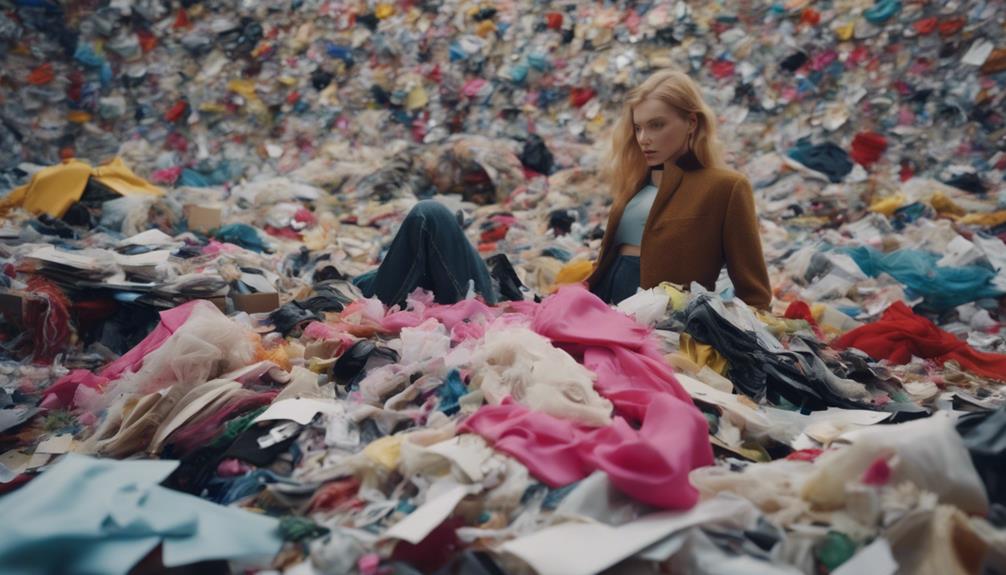
Many innovations in sustainable fashion promise change, yet they often fall short of making a lasting impact on the industry's environmental footprint. You might find that many so-called sustainable practices are just short-lived innovations that don't address the core issues.
Here are some key points to reflect on:
- Limited Results: High-profile initiatives like bio-based materials haven't greatly reduced the overall environmental impact of fashion.
- Misleading Models: Concepts such as Rent-the-Runway can be appealing but often fail to deliver genuine sustainability benefits.
- Temporary Fixes: Innovations tend to focus on isolated changes instead of tackling systemic problems, leading to solutions that are more cosmetic than effective.
- Waste Crisis: Despite new practices, the fast fashion model continues to thrive, with 60% of clothing ending up in landfills or incinerated within a year.
These short-lived innovations create a false sense of progress, preventing the industry from truly addressing its environmental impact.
It's vital to push for deeper, more effective changes that go beyond surface-level solutions. By recognizing these shortcomings, you can make more informed choices about sustainable fashion.
Lack of Regulatory Oversight
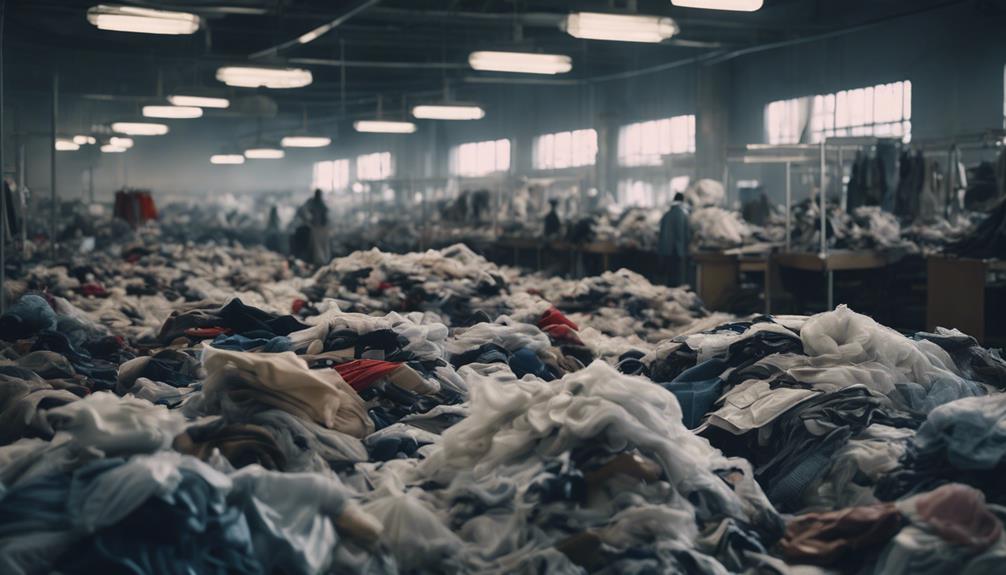
Without strong regulatory oversight, the fashion industry often allows companies to make exaggerated sustainability claims that mislead consumers and obscure the real environmental impacts. A staggering 42% of green claims are deemed false or misleading by the European Commission, highlighting the severity of the issue. This lack of regulatory oversight means companies can easily evade accountability for their practices, leading to harm for both the environment and workers.
Many brands set vague sustainability goals that lack enforceable standards, enabling them to engage in greenwashing without any real commitment to sustainable practices. As a result, consumers are left confused, believing they're supporting ethical brands when, in reality, many fallback on unsustainable methods. The absence of a solid regulatory framework has allowed these deceptive practices to persist unchecked.
Calls for government intervention have grown louder, emphasizing the urgent need for extensive regulations that would hold fashion companies accountable for their ecological and social footprints. Until such measures are in place, you might find it challenging to truly support sustainable fashion, as the industry often prioritizes profit over genuine ethical practices.
Sourcing and Transparency Issues

Sourcing and transparency issues plague the sustainable fashion industry, making it tough to verify whether brands truly uphold ethical practices. While many sustainable brands claim to prioritize ethical sourcing, the reality often falls short. Here are some key concerns:
- Lack of Clear Supply Chains: Many brands don't provide thorough information about their supply chains, leaving you in the dark about the sourcing of materials and labor conditions.
- Greenwashing: Some companies use vague sustainability claims without concrete data, leading to confusion over what 'sustainable' really means.
- Questionable Initiatives: Organizations like the Better Cotton Initiative face scrutiny for not ensuring fair labor conditions, raising doubts about their true impact on farmers.
- Recycling Reality: With only 15% of old clothing being recycled or donated, the transparency of recycling initiatives is questionable, making it hard to trust sustainability efforts.
These transparency gaps create barriers for consumers like you who want to make informed choices. Without clear information, it becomes challenging to support truly ethical sustainable brands.
Frequently Asked Questions
What Is the Problem With Sustainable Fashion?
The problem with sustainable fashion is its higher costs, limited options, and potential greenwashing. You might find it frustrating when brands misrepresent practices, making it harder to trust and choose genuinely sustainable products.
What Are the Risks of Sustainable Fashion?
When exploring the risks of sustainable fashion, you'll find issues like higher costs, greenwashing, limited choices, and potential misconceptions about environmental benefits. These factors can complicate your decision-making and impact your shopping experience.
What Are the Negatives of Ethical Fashion?
Imagine trying to find a single tree in a vast forest. The negatives of ethical fashion often include limited options, higher costs, and confusion from misleading claims, making your shopping journey feel overwhelming and frustrating.
Do People Really Care About Sustainable Fashion?
You might think people care about sustainable fashion, but many prioritize low prices and convenience instead. While awareness is high, actual purchasing behavior often doesn't reflect that concern, leaving a gap between intention and action.
Conclusion
Sustainable fashion is like a double-edged sword—while it aims to improve the industry, it often cuts deeper with its challenges. Despite the challenges, there are undeniable benefits of sustainable fashion. By using eco-friendly materials and ethical production practices, sustainable fashion can reduce the environmental impact of the industry. Additionally, it can also promote fair wages and working conditions for garment workers, contributing to social and economic justice. However, implementing these changes on a large scale and convincing consumers to shift their purchasing habits is an ongoing struggle for the industry.
You've seen the misleading claims and felt the pinch of higher prices. As consumers, we must navigate this tangled web of greenwashing and limited options.
If we truly want to embrace sustainable fashion, we need to demand transparency and hold brands accountable.
Only then can we weave a future that's genuinely eco-friendly and accessible for everyone.
